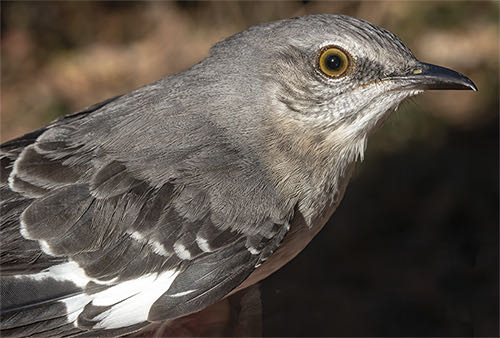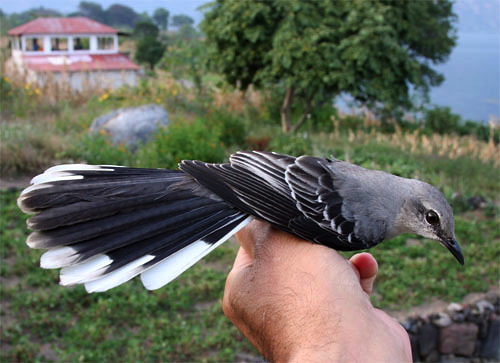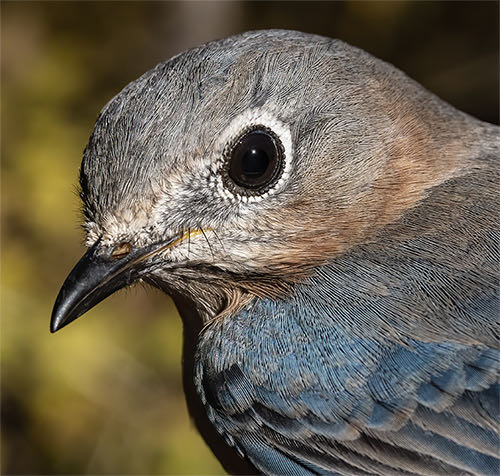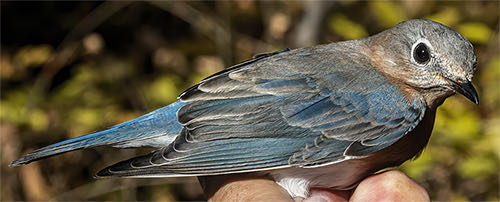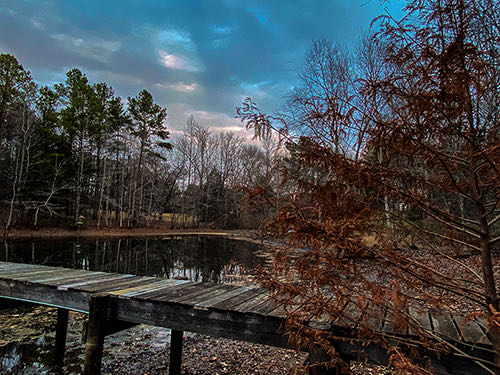- Established 1982 -HOME: www.hiltonpond.org
THIS WEEK at HILTON POND Subscribe for free to our award-winning nature newsletter (Back to Preceding Week; on to Next Week) |
A PRETTY GOOD Since mid-October--after southbound migrants passed through and an unexpected big influx of Yellow-rumped Warblers tapered off--there's been precious little bird activity at Hilton Pond Center. Observations are 'way down and despite deploying a half-dozen mist nets dawn 'til dusk, most days we’ve handled only two or three individuals. Surprisingly, then, on 7 December 2021 we captured five Yellow-rumped Warblers, and one each Eastern Phoebe, Northern Cardinal, Downy Woodpecker, White-throated Sparrow, and American Robin. Oh, and did we mention one particular Tufted Titmouse (TUTI, below)?
All text, maps, charts & photos © Hilton Pond Center What’s so special about catching a TUTI, you might ask, since in the eastern U.S. you're likely to see one (or hear its “peter, peter, peter”) in your yard or at your feeders nearly every day. Well, other than the fact that ALL birds are special, that particular titmouse was of significance because it was our 3,000th banding of 2021—just the fourth time we’ve reached that plateau in 40 years at the Center! In 24 of our 40 years we haven’t even reached the 2,000-bird mark, so hitting 3,000 represents a lot more birds and a lot of work. To be clear, almost a third of this year’s captures were Pine Siskins (n = 988) that showed up during last winter’s unprecedented irruption, but we’ve still handled 81 different kinds of birds since 1 January—well above our 40-year average of 66 species.
All text, maps, charts & photos © Hilton Pond Center This year we’ll not reach our all-time records of 4,061 individuals and 95 species set in 1991 (and probably won’t make the second-best mark of 3,499 from 1993), but the next plateau of 3,049 from 1994 is within reach with three weeks yet to go in the current calendar year. You can bet we’ll be running mist nets every fair-weather day from now until the ball drops on New Year’s Eve as we try to capture and band another 50 birds or so in the longest-running year-round bird banding study in the Carolinas. All text, maps, charts & photos © Hilton Pond Center WEEKLY BANDING HIGHLIGHTS In the 1980s and early 1990s when our 11 acres were bordered by a 70-acre Loblolly Pine plantation, a few Brown-headed Nuthatches (BHNU) that nested over there came regularly to Hilton Pond Center's sunflower seed feeders. Like Carolina Chickadees, BHNU would grab a single seed and disappear, only to return a few minutes later and repeat the process. They may have eaten some of those tasty morsels, but both chickadees and nuthatches more likely were caching seeds--only to forget and have them discovered later by close relatives or some other seed-stealing species.
All text, maps, charts & photos © Hilton Pond Center After the neighbor's mature loblollies were clear-cut for prime lumber in 1995 the parade of Brown-headed Nuthatches became a rarity at the Center, so this year we're pleased to have banded three--including one this week. Even so, BHNU have never been truly common locally; we've banded only 57 in 40 years! We haven't seen so many Brown-headed Nuthatches since. However, now that daughter trees from the original loblolly stand have volunteered and grown tall across Center property, we're hopeful Brown-headed Nuthatches will become re-established and once again entertain us with feeder antics and their distinctive "squeaky toy" calls. All text, maps, charts & photos © Hilton Pond Center Another infrequently captured species crossed the banding table this week at Hilton Pond Center: An immature Northern Mockingbird (NOMO)--just our 189th banded since 1982. This number seems surprisingly low for a species that is common across the Carolina Piedmont; we suspect our acreage--now mostly wooded--isn't optimal for NOMO, more abundant in open spaces with scattered shrubs and fence rows. This week's Northern Mockingbird (below) is a hatch-year bird with somewhat muddy iris; older NOMO in our area usually show an eye that is yellow, crystal-clear, and with a sharp border.
All text, maps, charts & photos © Hilton Pond Center Northern Mockingbirds, which breed in the Caribbean, across Mexico, in every contiguous U.S. state, and (just barely) into Canada--are called "northern" because a closely related and similar-looking Tropical Mockingbird (TRMO) occurs (with essentially no overlap) in Central America and northern South America. We often encountered TRMO on our Operation RubyThroat hummingbird expeditions to Costa Rica, Belize, Guatemala, and Nicaragua, where they behave much like their northern counterparts--singing long and loud from conspicuous perches atop a tall tree or rooftop and occasionally dive-bombing some unsuspecting territorial intruder (human or otherwise).
All text, maps, charts & photos © Hilton Pond Center In our image above of a Tropical Mockingbird from Guatemala you can see what we perceive as a somewhat longer tail with a lot more white overall in the rectrices. However, there is much less white in the TRMO's primary feather bases and its primary coverts. Therefore, Tropical Mockingbirds can't flash that big white wing patch (top photo and below)--used by NOMO in courtship and to startle insects into taking flight.
All text, maps, charts & photos © Hilton Pond Center Come December, we often hear from homeowners surprised to see Eastern Bluebirds (EABL) still flying about their yards, drinking and bathing at water features, or even coming to suet feeders. Why, sometimes in winter folks even see EABL going in and out of nest boxes. "I thought bluebirds all went south in winter" is a common comment, but that's certainly not the case in the Carolina Piedmont. Here our EABL are year-round residents, although those that breed in north-central states and New England typically bail out in fall and come south, possibly crossing paths with our local breeders.
All text, maps, charts & photos © Hilton Pond Center We've found that Eastern Bluebirds (above) we capture at Hilton Pond Center--including those banded as nestlings in boxes we provide--tend to hang together through their first fall and winter. In fact, we've often seen apparent family flocks of up to a dozen EABL bearing aluminum leg bands perched on power lines along the Center's road frontage. (They also may roost tohgether in a winter box like our Brown-headed Nuthatches mentioned above.) When spring arrives, such flocks disperse as last year's fledglings go off looking for mates of their own--or possibly to sit out their first year as potential breeders.
All text, maps, charts & photos © Hilton Pond Center This week we banded two Eastern Bluebirds, both young females that hatched this summer. (As shown, females have much paler heads and backs than males.) There's no way right now to determine whether these two were produced locally. However, if we recapture them here in a future breeding season we might logically conclude they are non-migrants; OR--more spectacularly--if someone recaptures one during summer in, say, Pennsylvania it would imply that individual EABL had northern origins. Incidentally, this week's captures brought the Center's Eastern Bluebird total to 352--our 30th most common of 127 species banded since 1982. (NOTE: December is a good time to start making bluebird boxes. And it's not too early to actually put them up since--as mentioned above--several kinds of cavity nesters may use them as roost boxes to fend off winter chill.) All text, maps, charts & photos © Hilton Pond Center Don't forget to scroll down for lists of all birds banded and recaptured during the week. HILTON POND SUNSETS "Never trust a person too lazy to get up for sunrise
All text, maps, charts & photos © Hilton Pond Center Sunset over Hilton Pond (above), 04 December 2021
All text, maps, charts & photos © Hilton Pond Center Sunset over Hilton Pond (above), 07 December 2021 Photoshop image post-processing for this page employs |
|---|
|
"This Week at Hilton Pond" is written and photographed by Dr. Bill Hilton Jr., executive director of Hilton Pond Center for Piedmont Natural History
|
|
|
Please refer "This Week at Hilton Pond" to others by clicking on this button: |
|


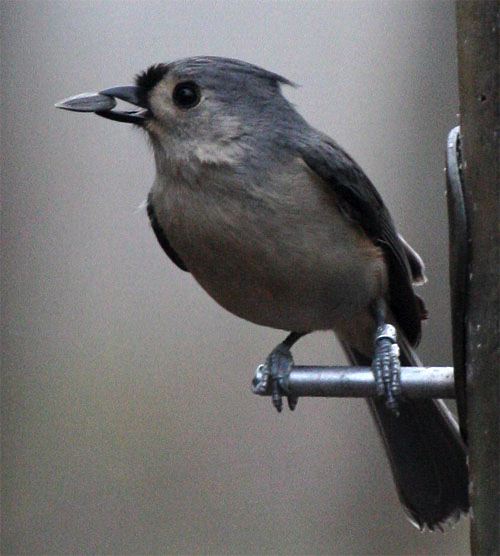
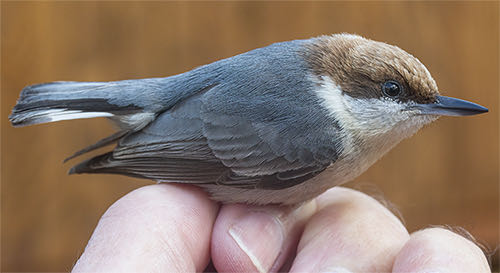
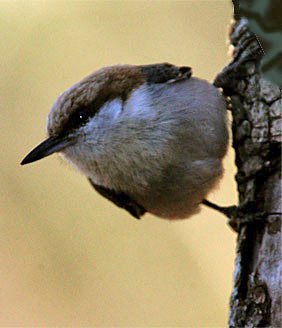 They have nested on-site--a couple of times in wooden boxes erected for Eastern Bluebirds--but several springs ago on a U.S. visit our sharp-eyed Costa Rican colleague Ernesto M. Carman found a nuthatch nest six feet up in a slender hardwood snag right on the banks of
They have nested on-site--a couple of times in wooden boxes erected for Eastern Bluebirds--but several springs ago on a U.S. visit our sharp-eyed Costa Rican colleague Ernesto M. Carman found a nuthatch nest six feet up in a slender hardwood snag right on the banks of 